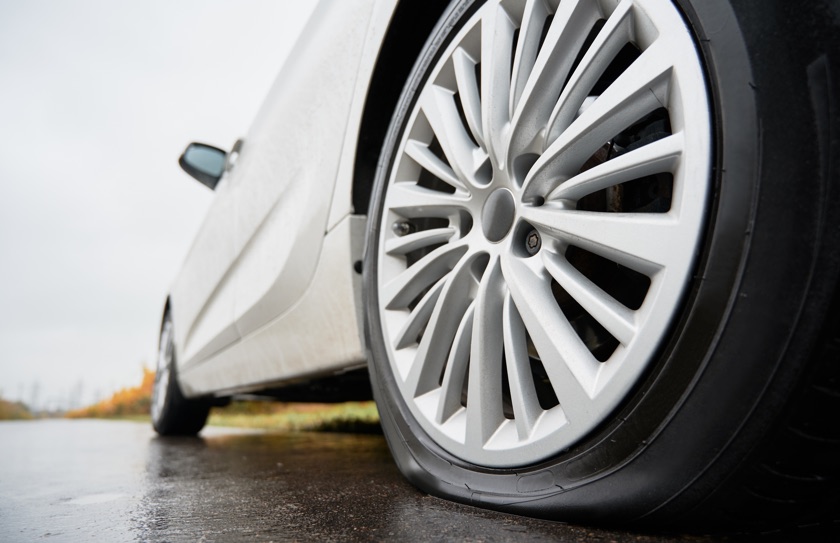Slow Punctures
- Slow punctures in tyres can occur from driving over debris, wheel corrosion or impacts from potholes.
- Signs of a slow puncture includes low tyre pressure, drifting, vibrating steering wheel or reduced responsiveness.
- Avoid driving with a slow puncture due to safety risks, rectified through replacement or repair.

Slow punctures aren’t great news for your car but the signs can sometimes be missed.
It’s important that you know what the causes of slow punctures are, along with the key signs to spot and what you should do to solve this problem.
Let’s take a look.
What is a slow puncture?
As the name suggests, a slow puncture is when air escapes from a tyre gradually over a longer period of time, usually passing through a small hole or opening. This decrease in tyre pressure occurs whether the car is moving or stationary.
What causes a slow puncture?
There are four main causes of a slow puncture:
- Driving over debris: Nails, stones or other sharp debris can puncture small holes in the tyre rubber.
- Corroded wheel: Wheel corrosion can affect the welding or the metal in severe cases, resulting in air escaping through the metal or between the wheel and rim.
- Age or general wear: If your tyre is old or has just covered a lot of miles, wearing down the tread, this can also lead to thin rubber and potentially causes holes to develop.
- Potholes or other impact: Driving over potholes or any other obstructions that impact your tyres can lead to a hole forming.
These are the causes but it’s not always easy to spot when a slow puncture has actually happened — so how can you tell?
4 signs of a slow puncture
Regular visual inspections can help you spot a puncture, but other times it’s less obvious. Here are some potential signs of a slow puncture:
- Low pressure: If a tyre has lower pressure than the others or even looks visibly deflated, a slow puncture could be the culprit. Particularly if you notice it going down again after topping up the pressure.
-
- Drifting when driving: Perhaps your car is drifting to one side as you drive it? Whilst this may be the sign of a wheel alignment problem, a slow puncture could also be a cause.
- Vibrating steering wheel: Most obvious when driving at higher speeds, a puncture can result in your steering wheel vibrating due to the imbalance in the wheels.
- Less responsive: If your car just doesn’t seem as responsive as it once was, this could be another indicator of a slow puncture too due to your tyre(s) having less traction on the road.
If you’re unsure whether your tyre has been punctured, it’s worthwhile seeking advice from a professional. Often they’ll be happy to check the health of your tyres for free.
Is it safe to drive with a slow puncture?
It is not safe to drive with a slow puncture. If it’s left to worsen, it could impair the car’s responsiveness, handling and braking. The moment you notice signs of a puncture, you should get a professional to take care of it.
If the tyre is deflated/flat as a result of the puncture, this is illegal and could result in a fine.
Should I repair or replace?
Slow puncture repair is only possible in certain cases, so always get the opinion of a professional as to whether you should replace or repair the tyre completely.
Looking for high-quality tyre replacement in Central England? Here at Mr Tyre, we’re the leading provider of tyre fitting, MOTs, parts replacements, diagnostics and car servicing, with over 35 branches across the region. Get in touch to find out more.


